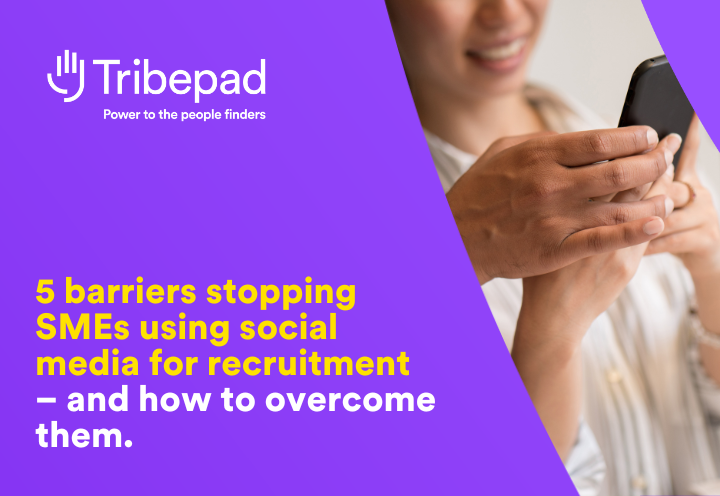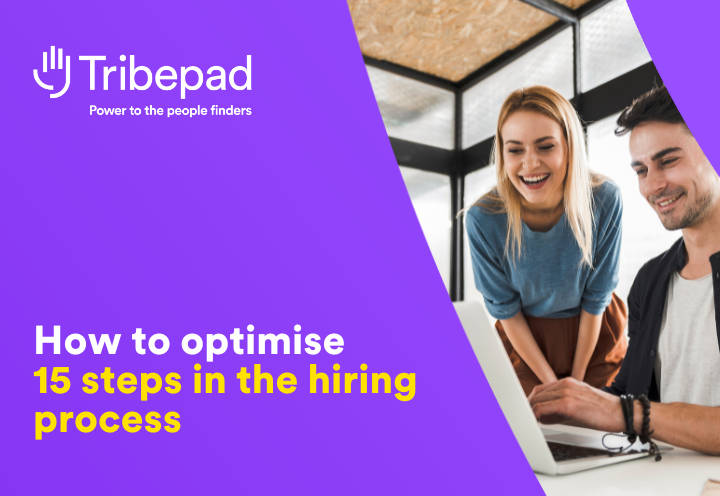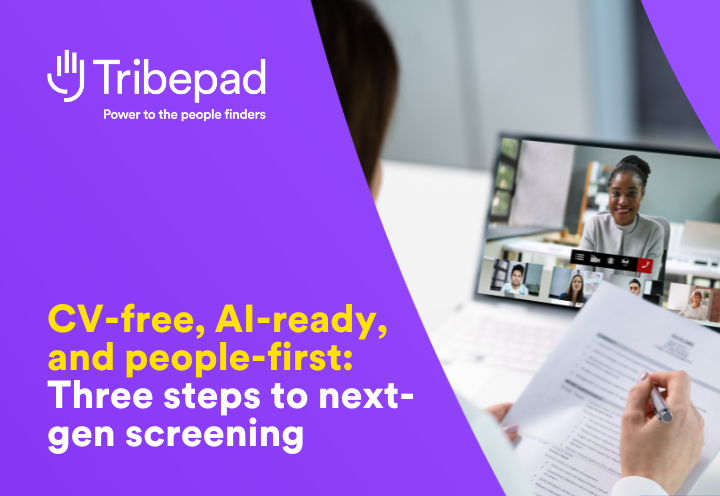Improving recruitment reporting is an increasingly big priority for SMEs – but SME recruiters often lack the skills, confidence, and tools to wrangle data effectively. Here are eight steps to becoming more data driven in your recruitment – even if you’re starting completely from scratch.
A few years ago, most SMEs weren’t doing much recruitment reporting. If any. Data driven recruitment was neither feasible nor a priority.
But the culture, conversation, and capabilities around data have evolved since then. Today there’s typically much greater demand for recruitment data, even by smaller organisations of 50-odd people.
And for good reason (or seven good reasons, actually). Better data is the key to building a fairer, faster, better recruitment function that delivers better outcomes for everyone.
But small business recruiters often lack the skills, confidence, budget, time, and tools to become more data driven. Data can seem overwhelming and intimidating – a totally different kettle of fish from the softer people skills you excel at.
We spoke to Recruiting Brainfood’s Hung Lee and guests about data driven decision-making in SMEs, to ask how SME recruiters should start dipping your toe into the recruitment reporting pond.
Read on for eight tips from the pros. Or watch the webinar now 👇
Better recruitment reporting: 8 steps for SME recruiters
1 – Understand what’s happening now
The first step to becoming more data driven is to understand how recruitment reporting works for your organisation currently.
At the bare minimum, someone somewhere will be doing some sort of tracking. Sure, if you’re still using spreadsheets for recruitment it’ll be slow, clunky, and ineffective. But what are they trying to do? That’s your starting point to understand what data’s going to be most useful.
Work out:
- What’s happening now?
- What’s the underlying need?
- How tenable is the current approach?
- What needs upgrading and how soon?
Then you’ll have a much better idea how to productively move forwards.
2 – Choose your metrics
There are endless metrics you could report on. But don’t get overwhelmed. If you’re just starting your journey towards becoming more data driven, anything is better than nothing.
Talent leader Akbar Karenga advises you work backwards, starting from where you want to finish. That is, what does success look like for your company? What’s most critical for you?
That’ll probably throw up a conversation around quality-of-hire, which you can map backwards to a top-of-funnel number. Like… we’d make better quality hires if we had more quality applicants to choose from, so we need to increase application volume.
Hung also points out the value in focussing on shorter-term chunks here. You don’t need to map exactly what’s important for your organisation for 12-months. Ask yourself: what’s the most important thing for us over the next 12-weeks?
This also ties back to your current tooling. You can’t magic up a metric that your tech doesn’t give. How can you settle on something that’s useable and OK, at least until you upgrade your recruitment reporting capabilities?
3 – Look for the stories
Gita Selli, Senior Manager of Global Talent Acquisition with Loadsmart, shares her own journey towards becoming more data-confident:
“You have to change your mindset, to try and understand the story behind the numbers. What’s the story, and how will we tell that story to our leaders, peers, and direct reports? That’s how I started to get excited about data.”
When recruitment reporting is a “chore”, it’ll always somehow fall to the bottom of your to-do. But if you can discover your own excitement about the stories behind the numbers, it’ll become a mile easier to motivate yourself to become more data driven.
Hannah Neuser, Head of People and Culture for Arethia observes that stories unfolding is the whole point of collecting data. Becoming more data driven doesn’t (often) deliver one huge, impressive outcome. Rather, it’s many smaller outcomes that add up.
You collect some data to understand your pain points, then you get a steer on which other data would help you solve it. The data slowly exposes hidden problems and bit-by-bit, you roll out improvements.
4 – Change behaviour
Getting better at recruitment reporting isn’t just a data challenge. Especially for smaller businesses, the people who collect and input data often aren’t recruiters.
So how do you educate and empower those people to collect data more effectively? Especially when they’re already busy. And when they might not have a great baseline understanding of how recruitment works or why their behaviour matters.
Some thoughts from the webinar:
- Map process workflows to show managers what you need
- Put in SLAs to govern behaviour around data collection
- Educate why change is needed, rather than forcing
- Relate hiring metrics back to managers’ targets to show why they should care
- Connect data collection back to tangible outcomes – not data for data’s sake
- Keep recruiters and managers close, so everyone understands the stakes
- Use tools that automatically collect data to reduce the burden on managers
When we’re talking about data, it’s easy to forget that we’re still talking about people. Behaviour change is a huge part of the data driven recruitment puzzle.
5 – Choose the right recruitment tools
This isn’t a big pitch, but all the webinar guests agree that recruitment reporting is practically impossible manually. Do you have a tool that automatically collects data? Does that tool generate intuitive reports that are easy to understand and circulate to the right people?
Wanting to become more data driven is one of the biggest drivers to consider an ATS. Or to consider upgrading to an ATS with robust end-to-end reporting functionality, if you’re using one of the basic, legacy options out there.
But what if there’s just not budget right now? That doesn’t mean you can’t start using data better, although you’ll obviously be limited in what you can achieve.
Akbar suggests pulling two or three key figures, even if that’s time-consuming and manual, and present them as a snapshot to leaders. That way, you’re starting to move the conversation towards being more data driven, and ultimately bolstering your case for recruitment software.
Tribepad Gro is ready built, ready-to-go recruitment software that’s the complete package from attraction to onboarding and reporting. If you’re thinking about upgrading your talent tech, we’d love to chat.
6 – Build internal allies
Recruiting for a small business can be lonely – but you’re not really alone! It’s imperative when you’re a small team, or team of one, that you leverage the expertise and support of the people around you. It’s no different with recruitment reporting.
Look across the business for potential allies who are already good with data. Sales, marketing, engineering and IT are usually good candidates. But, as Hannah says, look for people who’ll meet you where you’re at. That is, people who’re happy to teach you and show you total basics, if that’s what you need.
Becoming more confident with data can be an intimidating process. But as Hung points out, nobody came out of the crib knowing how reporting works. This stuff is totally learnable.
7 – Curate reports for stakeholders
Recruitment reporting is obviously helpful for you, as a recruiter. But that data’s also going to be useful for leaders and managers. (Not least to help you prove why your function is valuable, which is one of the major reasons to become more data driven.)
But one common mistake is to circulate the same reports to everyone. Leaders and managers aren’t interested in anywhere near the same level of granular detail that you are.
Gita recommends taking a step back to understand what stakeholders need and why, then generate actually useful reports that convey that information: “Recruitment needs to control the narrative”.
8 – Document your successes
For small businesses, your journey with data is going to be just that. A journey. You won’t have instantly perfect data. You won’t have instantly brilliant results. And you’re very unlikely to have instant buy-in from the business.
So your role isn’t only to start using data but to continually grow how data’s used and valued across the business. Track your successes – qualitatively and quantitatively – and present those back to your key stakeholders.
Are you improving hiring accuracy? Manager satisfaction? Ramp-up times? Are more hires passing the 90-day stage?
This isn’t a one-and-done conversation. Thinking about this stuff upfront means you’ll be in a brilliant position for meaningful discussion in 3, 6, and 12-months’ time.
Recruitment reporting 101: start anywhere, as long as you start.
Wrangling recruitment data can feel intimidating, especially if you haven’t done much before and don’t have great data available right now. But it’s something you can upskill in – and small changes can start making a big difference.
Don’t be afraid to start with total basics. If all you can get right now is time-to-fill, start there.
That said, it will help enormously to have the right tools. Collecting and analysing data yourself will add a heap more time and effort into your day, and limit what you can report on.
That’s time and effort that is worthwhile – better data is ultimately the lynchpin of fairer, faster, better hiring. But it’s also time and effort that could easily be saved, with the right recruitment software.
If you’re able to invest, look for an ATS that’s purpose-built for smaller businesses. That’s not just about price point (although obviously that’s critical). It should be zippy, simple, and streamlined, offering all the recruitment data you need in simple, intuitive reports
Tribepad Gro is ready built, ready-to-go recruitment software for growing teams. Take your recruitment to the next level with tech that’s the complete package, from attraction to onboarding and recruitment reporting.
Get your free recruitment diagnostic session with Tribepad consultants Dan and Hayley to learn what could be stalling your growth.




